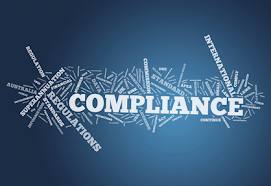Compliance Reminder — DOJ Announces Largest Healthcare Fraud Takedown
 Jacqui Merrill, an Associate at The Volkov Law Group, rejoins us for a posting on DOJ’s largest healthcare fraud takedown. Jacqui’s profile is here and she can be reached at [email protected].
Jacqui Merrill, an Associate at The Volkov Law Group, rejoins us for a posting on DOJ’s largest healthcare fraud takedown. Jacqui’s profile is here and she can be reached at [email protected].
On Wednesday, June 22, 2016, the DOJ announced the largest nationwide heath care fraud takedown in history, which resulted in criminal and civil charges against 301 individuals for alleged participation in health care fraud schemes. In total, the DOJ estimates that the 61 doctors, nurses, pharmacists, and other licensed medical professionals filed a total of more than $900 million in false billings across 36 federal districts.
As we continue to see an increase in the government’s enforcement actions focused on the health care industry, it is critical for health care providers to take proactive measures to ensure that they are in compliance with federal laws governing Medicare and Medicaid fraud and abuse, including the False Claims Act; Anti-Kickback Statute; and the Physician Self-Referral Law (Stark Law).
The joint task force responsible for the unprecedented nationwide sweep is the Medicare Fraud Strike Force, a component of the Health Care Fraud Prevention and Enforcement Action Team (HEAT) launched in May 2009. The Strike Force includes members from Department of Health and Human Services (including the Centers for Medicare & Medicaid Services), FBI, DOJ, Office of Inspector General, and Defense Criminal Investigative Service.
DOJ charged the individuals with various health care fraud-related crimes, including violations of the anti-kickback statutes, conspiracy to commit health care fraud, and money laundering.
Court documents (available here) allege that defendants submitted claims to Medicare and Medicaid for treatments that were medically unnecessary and frequently not provided. A significant number of the schemes involved patient recruiters, Medicare beneficiaries, and other co-conspirators who paid cash kickbacks in return for supplying beneficiary information to providers. The providers would then submit fraudulent bills to Medicare for the services.
For example, one group of defendants controlled a network of clinics in Brooklyn that recruited patients by giving bribes and kickbacks. The patients then received medically unnecessary treatment, for which the clinic received over $38 million from Medicare and Medicaid, which the conspirators subsequently laundered through more than 15 shell companies.
The federal Anti-Kickback Statute (42 U.S.C. § 1320a-t7b(B)) prohibits a person from knowingly and willfully soliciting or receiving anything of value in return for referring an individual or purchasing, leasing, ordering, or arranging for any good or service for which a payment may be made in whole or in part under a federal health care program. The Stark Law (42 U.S.C. § 1395nn) prohibits a physician from referring Medicare/Medicaid patients for designated health services to an entity with which the physician (or immediate family member) has a financial relationship, unless an exception applies, and prohibits the designated health services entity from submitting claims to Medicare/Medicaid for those services resulting from a prohibited referral.
The False Claims Act (31 U.S.C. 3729–33) prohibits the knowing submission of false or fraudulent claims to the government for payment, thus violations of Medicare and Medicaid anti-kickback and self-referral laws also expose violators to False Claims Act liability.
 Since January 2009, the Justice Department has recovered over $29.9 billion through False Claims Act cases, with more than $18.3 billion of that amount recovered in cases involving fraud against federal health care programs. These have included settlements with health care providers, pharmaceutical companies, medical laboratories, and others.
Since January 2009, the Justice Department has recovered over $29.9 billion through False Claims Act cases, with more than $18.3 billion of that amount recovered in cases involving fraud against federal health care programs. These have included settlements with health care providers, pharmaceutical companies, medical laboratories, and others.
These enforcement actions provide valuable lessons to compliance professionals operating in-house at health care companies. As we continue to see a rise in health care fraud and abuse enforcement, proactive strategies to mitigate these high-risk areas are key. Particularly when it comes to larger healthcare facilities, it is important to ensure that compliance programs are tailored to the facilities’ unique risk profile (ascertained through regular evaluations and assessments), employees are effectively trained, and adequate resources are being directed to the compliance program.















